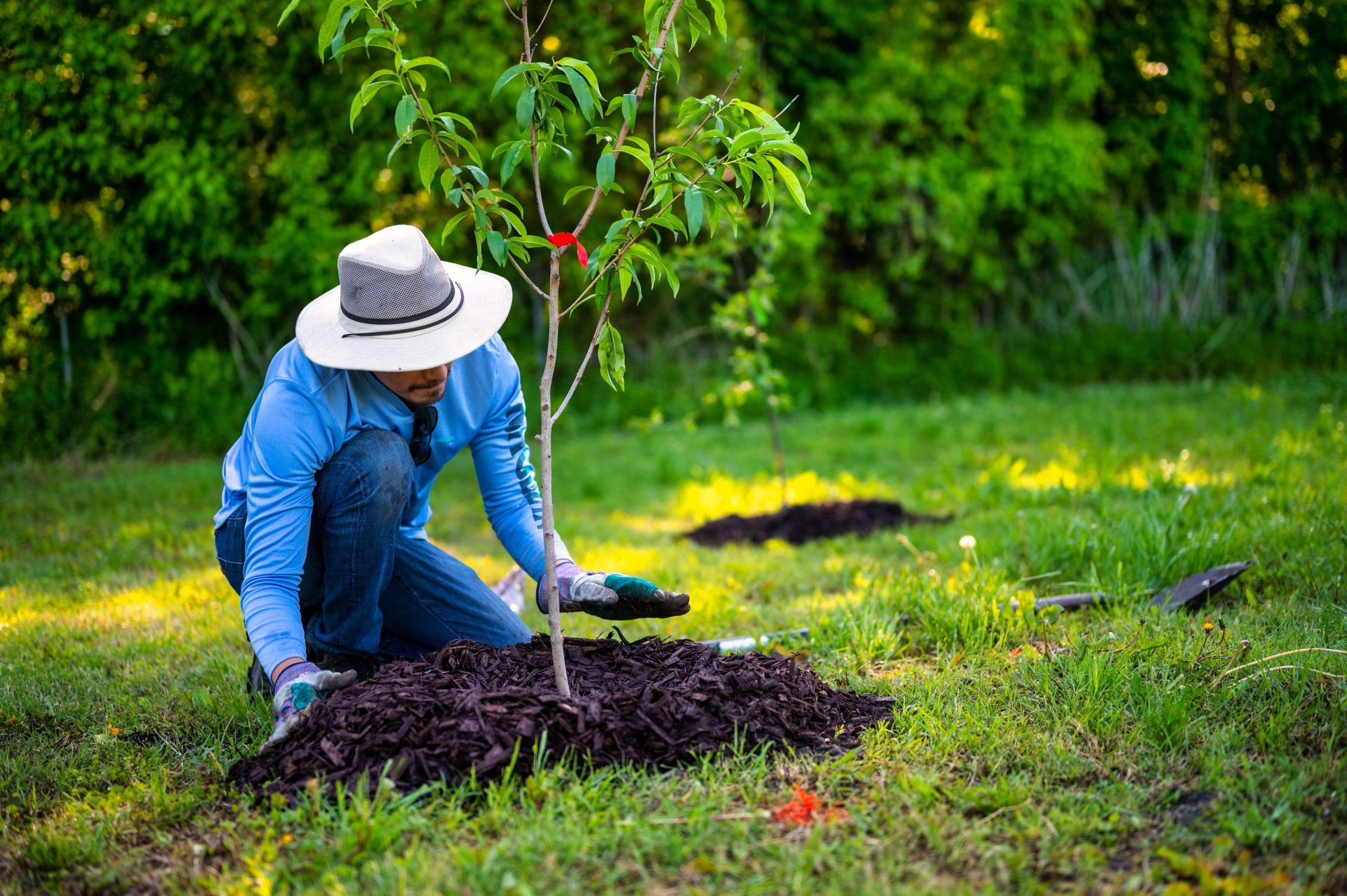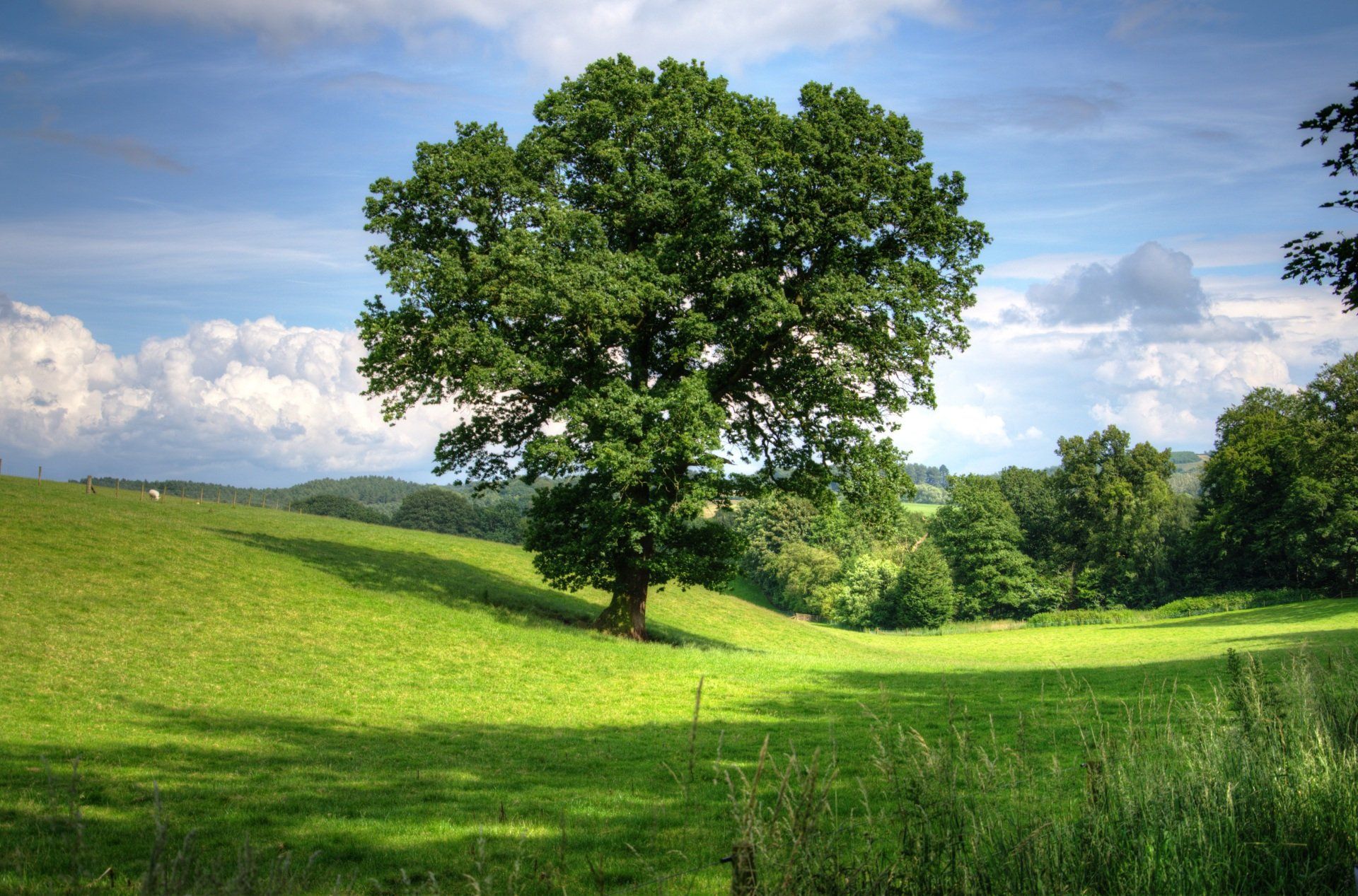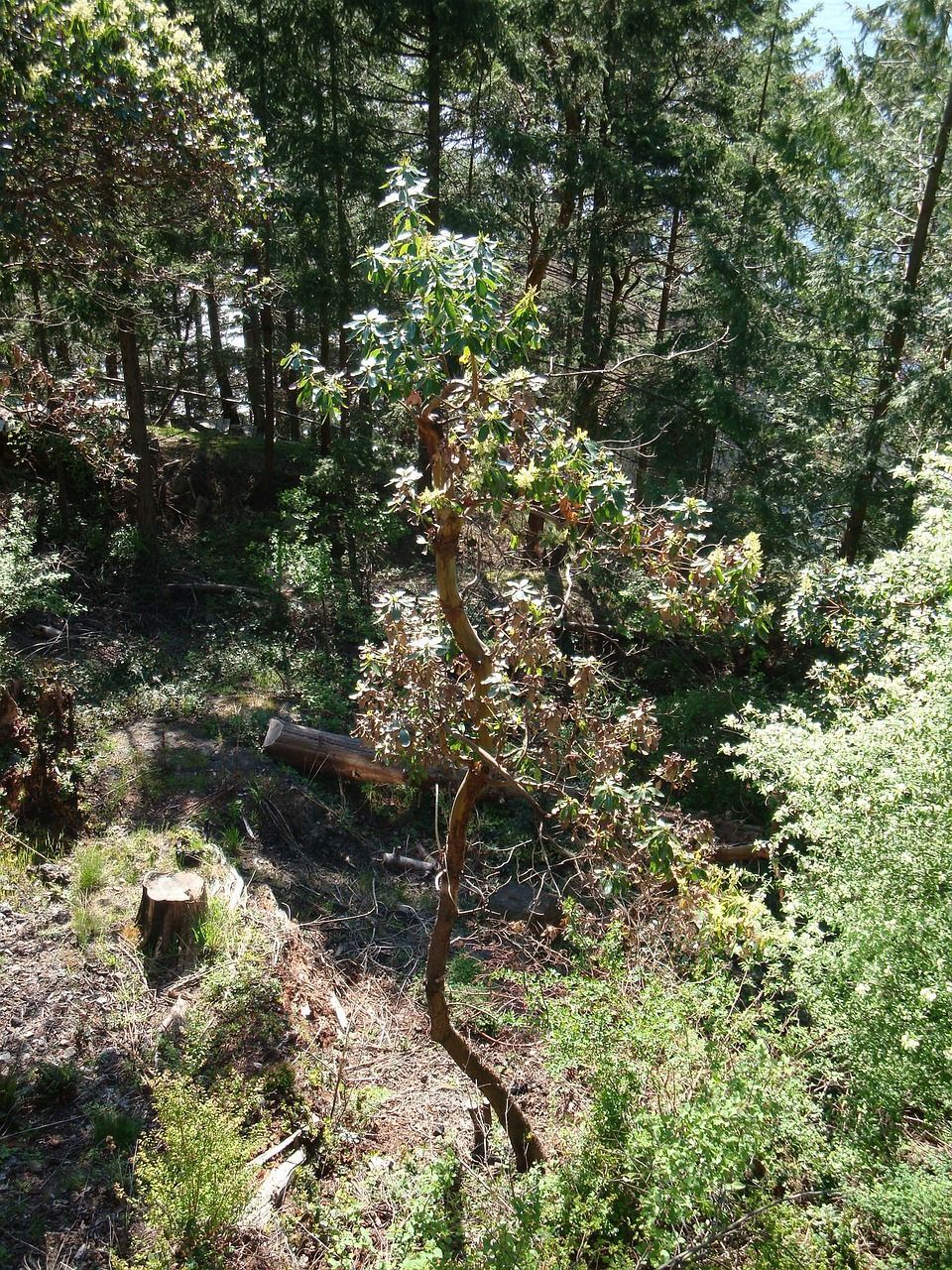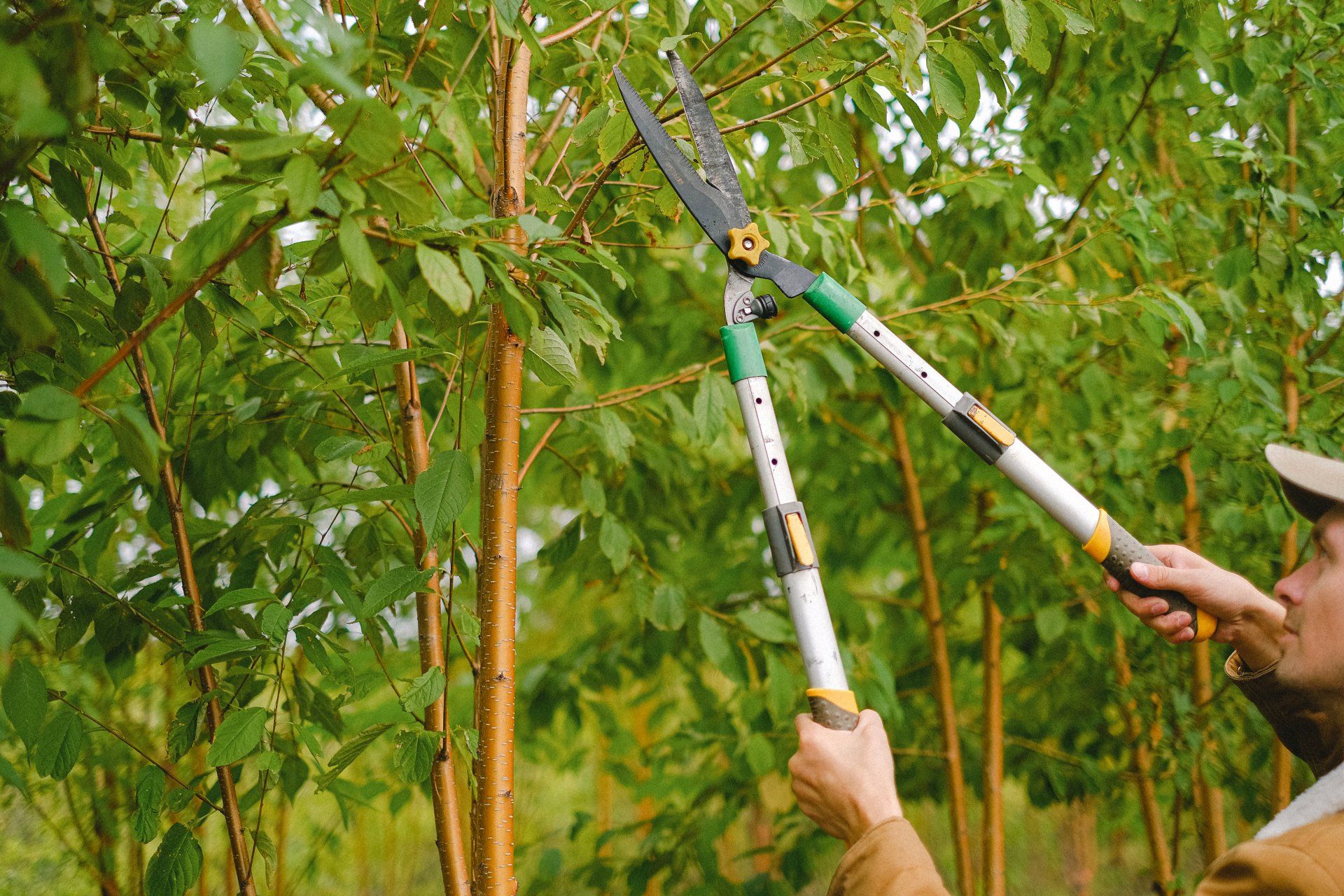Planting
Proper planting techniques may mean the difference between a healthy, vigorous tree and one that performs poorly or dies. By observing the following recommendations, you will be giving your tree the best possible start in life.
Plant the tree high. Dig the hole one or two inches less than the soil level in the container or the depth of the root ball. In other words, plant the tree one to two inches higher than the surrounding soil. Don’t worry about a few roots showing on the surface. If you have to dig deep to get through a hardpan or restricted layer, refill the hole with the original, loosened soil and let it settle for a week or so before re-digging a hole for the tree. Be sure not to plant the tree too deep. This may lead to crown rot and eventual death of the tree.
Dig the Hole two times wider than the container or root ball. For bare root trees, make the hole wide enough accommodate the roots without bending them.
Roughen the sides of the hole to make it easier for the roots to penetrate. Check for twisted, circling or kinked roots. Cut and remove roots that wrap around or are broken or discolored.
Refill the hole with the original soil. If a tree is to mature in the landscape, it will have to grow in the existing soil of the planting site. Soil and
amendments like peat moss, compost, rice hulls or fir bark are not necessary in most situations. Adding amendments to the entire area may be helpful in extremely poor soils. To exclude air pockets, firm the soil around the roots as you fill the hole. Keep the trunk and area free of soil.
Trees need oxygen - Don’t plant them in wet soggy soils
Water the tree thoroughly after planting to settle the soil around the roots.






